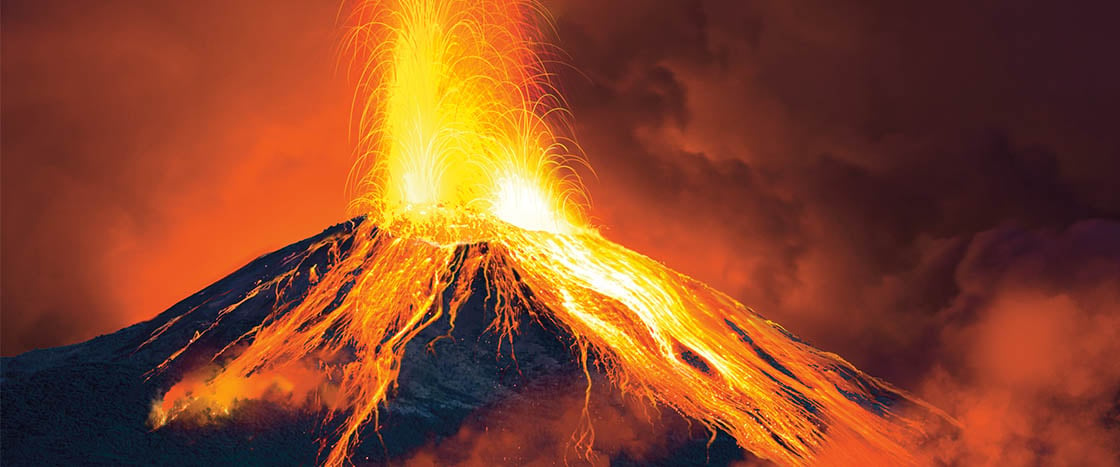But actually, it’s too late for you—and the people of Pompeii.
BOOM!
A powerful explosion seems to shatter the sky. The ground shakes violently. People fall. Horses and donkeys scream. Birds scatter by the thousands.
You see a terrifying sight: a gigantic column of gray smoke spewing from the top of Mount Vesuvius.
Except it’s not smoke.
The intense heat produced by the eruption has turned millions of tons of solid rock into superheated foam. The boiling plume shoots 12 miles into the sky at rocket speeds. When it hits the freezing air above Earth, the melted rock turns into tiny pebbles called pumice. It spreads through the air, carried by the wind, and pours down on Pompeii.
The pumice falls with painful force. It is mixed with hot ash, which clogs your nose and throat.
Many people are fleeing. Go with them! Push your way past the donkey carts and get through one of the gates of the city. Grab hold of the hand of a little boy who has become separated from his family. Keep moving. The farther away you get, the more likely you are to survive.
Other people decide to stay behind, to guard their homes and businesses. Crime is bad in Pompeii. An abandoned home or shop will almost certainly be looted by thieves. People hide in their homes. They think this strange storm of ash and rock will soon end.
They are wrong.
The sky turns black. As hours pass, the weight of the pumice causes roofs to collapse, trapping people in their homes.
Then more terror.
As the volcano loses energy, the molten rock and ash mix together to create superheated waves that rush down the mountain at up to 180 miles an hour. This burning, poisonous avalanche is known as a pyroclastic flow. When it hits Pompeii, death for those left behind is almost instant.
Over the next hours, millions of tons of ash and rock fall on the city.
In the weeks that follow, people search Pompeii for survivors.
There are none.
In fact, the entire city seems to have vanished. Pompeii is buried under more than 10 feet of rock.
Within a few decades, Pompeii is all but forgotten, wiped off the face of the Earth.


